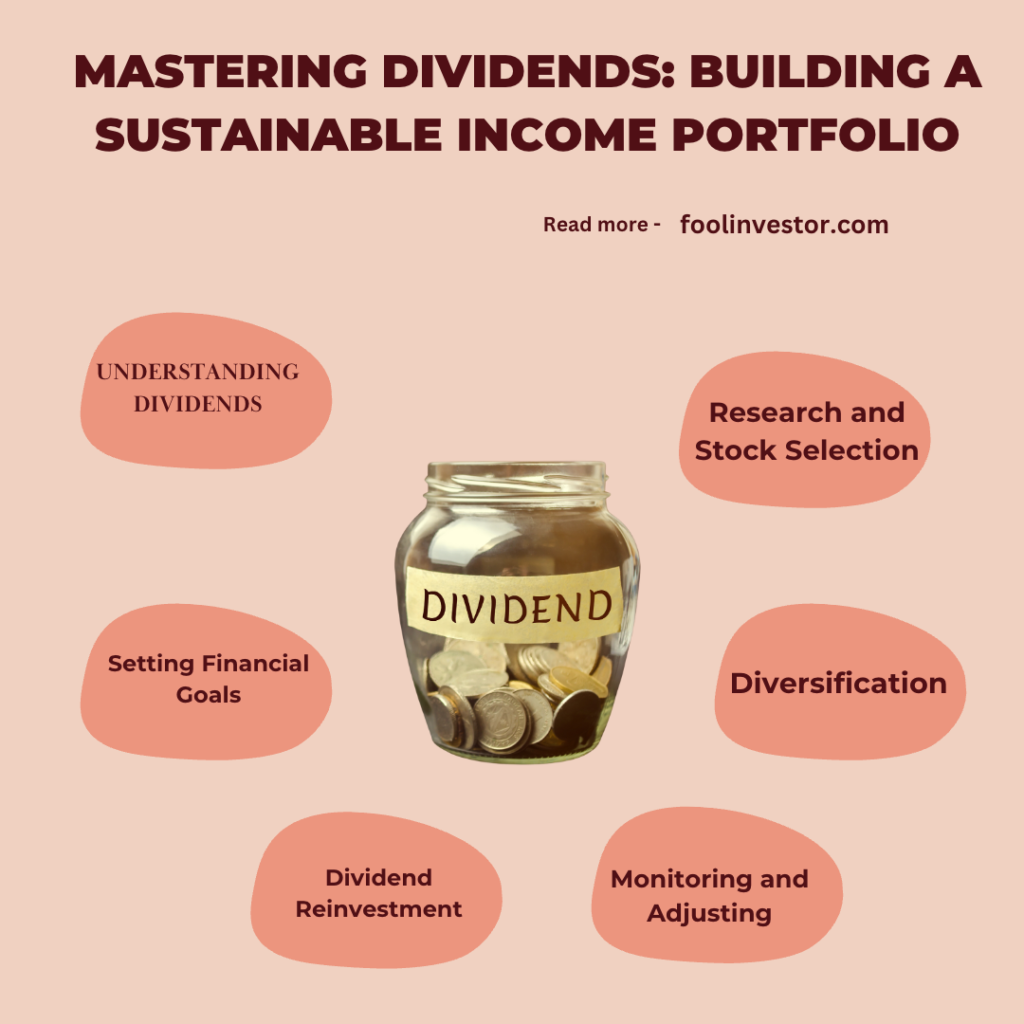Investing in dividend-paying stocks can provide a steady stream of passive income and long-term wealth accumulation. If you’re interested in building a dividend portfolio that generates sustainable income, this comprehensive guide will walk you through the essential steps.
From understanding dividends and selecting the right stocks to diversifying your portfolio and monitoring performance, we’ll cover all the basics to help you embark on your journey to financial success.

Steps to Build your Dividend Portfolio –
1: Understanding Dividends: Dividends are regular payments made by companies to their shareholders as a portion of their profits. They can be an attractive source of passive income. It’s important to understand different types of dividends, such as cash dividends, stock dividends, and special dividends. Learn about dividend yield, dividend payout ratio, and dividend growth to assess the potential return on your investments.
2: Setting Financial Goals : Define your financial goals before building your dividend portfolio. Determine the amount of income you aim to generate and the time horizon for achieving your goals. Consider your risk tolerance, investment timeframe, and income requirements to establish realistic expectations.
3: Research and Stock Selection : Thorough research is vital for selecting the right dividend stocks. Look for companies with a strong track record of consistent dividend payments, stable earnings growth, and a history of dividend increases. Pay attention to fundamental factors such as revenue growth, profitability, and cash flow. Additionally, assess the company’s industry position, competitive advantage, and dividend policy.
4: Diversification : Diversification is key to managing risk in your dividend portfolio. Invest in a variety of companies across different sectors and geographic locations. By spreading your investments, you reduce the impact of individual stock performance on your overall portfolio. Consider allocating funds to dividend-paying exchange-traded funds (ETFs) or mutual funds to further diversify.
5: Dividend Reinvestment : Dividend reinvestment can accelerate the growth of your portfolio over time. Reinvesting dividends allows you to purchase additional shares of the dividend stocks you own, compounding your returns. Explore dividend reinvestment plans (DRIPs) offered by companies or utilize brokerage accounts that automatically reinvest dividends.
6: Monitoring and Adjusting : Regularly monitor your dividend portfolio’s performance and stay updated on the companies you invest in. Track dividend announcements, earnings reports, and changes in company fundamentals. Periodically review your portfolio’s allocation, assessing the need for rebalancing or making adjustments based on changing market conditions or individual stock performance.
7: Seek Professional Advice : Consider consulting a financial advisor or investment professional to gain personalized guidance on building your dividend portfolio. They can help you analyze your financial situation, set realistic goals, and create a diversified portfolio aligned with your needs and risk tolerance.
Conclusion: Building a dividend portfolio requires careful research, strategic planning, and continuous monitoring. By understanding the fundamentals of dividends, setting financial goals, conducting thorough research, diversifying your investments, reinvesting dividends, and monitoring performance, you can create a dividend portfolio that generates sustainable income over time. Remember to stay informed, adapt to changing market conditions, and seek professional advice when needed. Start your journey towards financial independence by applying the principles outlined in this guide.
